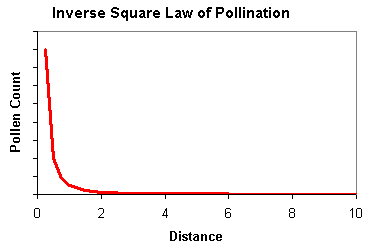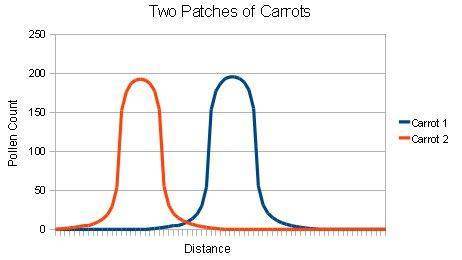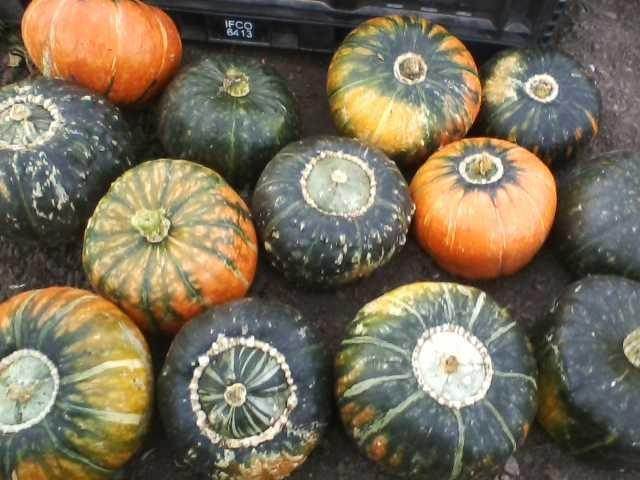
































 1
1




Hugh Kay wrote:This is a very interesting thread. Thanks!
Does the difficulty of maintaining several varieties of the same species, esp. in the case of Cucurbita pepo (squash etc.) and Brassica oleracea (cabbages etc.), mean that if the future becomes so local that buying true seeds every year became prohibitively expensive for most, that we probably wouldn't be able to grow as many varieties as now?
Hugh

 2
2







 1
1










 1
1




 3
3




Joseph Lofthouse wrote:
The mathematical probability of cross pollination looks like this. Extremely likely to be pollinated by nearby plants. Extremely unlikely to be pollinated by plants from further away.
In my garden at a separation distance of 100 feet, I get about a 5% cross pollination rate on small plantings of squash. I get about a 5% or less cross pollination rate on corn varieties grown 3 to 11 feet from each other.
Hedges help reduce pollen flow. Distance helps. Staggered flowering times help. The more diversity surrounding a paddock, the more pollinators there will be, and the more likely they will be to produce cross pollination. For example, at my place in the desert, the cross pollination rate on common beans is around 1:200. A collaborator's garden next to a swamp has a cross pollenation rate closer to 1:20. (That's for beans grown side by side, not in separate paddocks.)
I allow impurity in my squash: Taste has to be magnificent.
Mandrake...takes on and holds the influence
of the devil more than other herbs because of its similarity
to a human. Whence, also, a person’s desires, whether good
or evil, are stirred up through it...
-Hildegard of Bingen, Physica

 1
1




Ryan M Miller wrote:what would be the risk of cross-pollination for squash planted 370 feet apart?




Mandrake...takes on and holds the influence
of the devil more than other herbs because of its similarity
to a human. Whence, also, a person’s desires, whether good
or evil, are stirred up through it...
-Hildegard of Bingen, Physica




Mandrake...takes on and holds the influence
of the devil more than other herbs because of its similarity
to a human. Whence, also, a person’s desires, whether good
or evil, are stirred up through it...
-Hildegard of Bingen, Physica

| I agree. Here's the link: https://woodheat.net |







